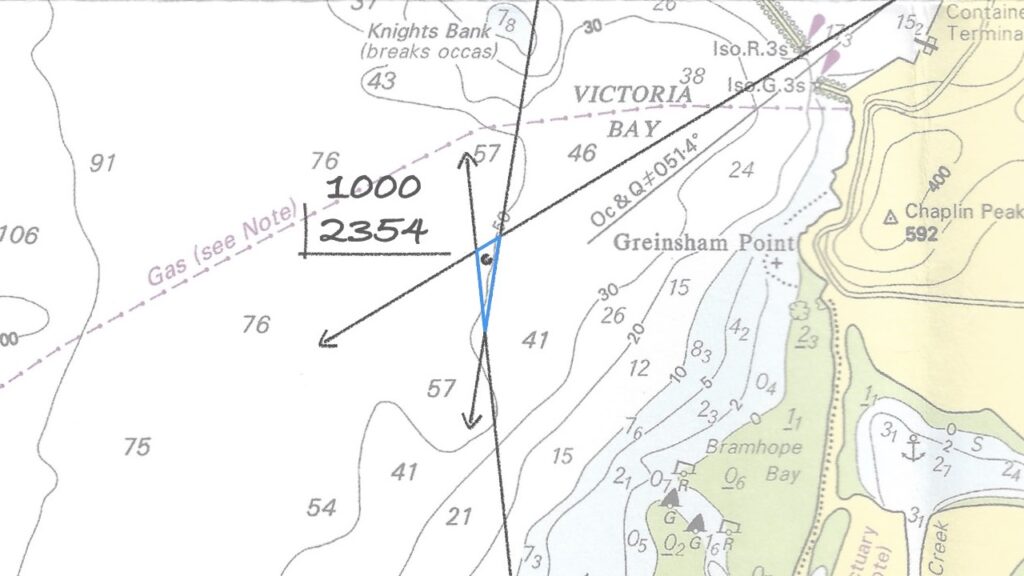Cocked Hat
The small triangular area formed when three position lines on a nautical chart intersect but do not meet at a single point, indicating a degree of uncertainty in the vessel’s position.
The term “Cocked Hat” originates from traditional navigation practices, where sailors would use celestial or terrestrial observations to determine their position at sea. When plotting these observations on a chart, navigators draw lines of position (LOPs), which represent the possible locations of the vessel based on each observation. Ideally, these LOPs should intersect at a single point, giving a precise location. However, due to errors in measurement, inaccuracies in the chart, or environmental factors such as current and wind, the LOPs often do not converge perfectly. Instead, they form a small triangle, known as the “Cocked Hat.” The vessel’s true position is assumed to lie somewhere within this triangle, though its exact location remains uncertain.
The name “Cocked Hat” comes from the resemblance of the triangular shape to the traditional three-cornered hat worn by naval officers in the 18th century. While the size of the Cocked Hat can vary depending on the accuracy of the observations and plotting, a smaller triangle generally indicates a more accurate fix. Navigators must use their judgement, experience, and additional information to refine their position further.



